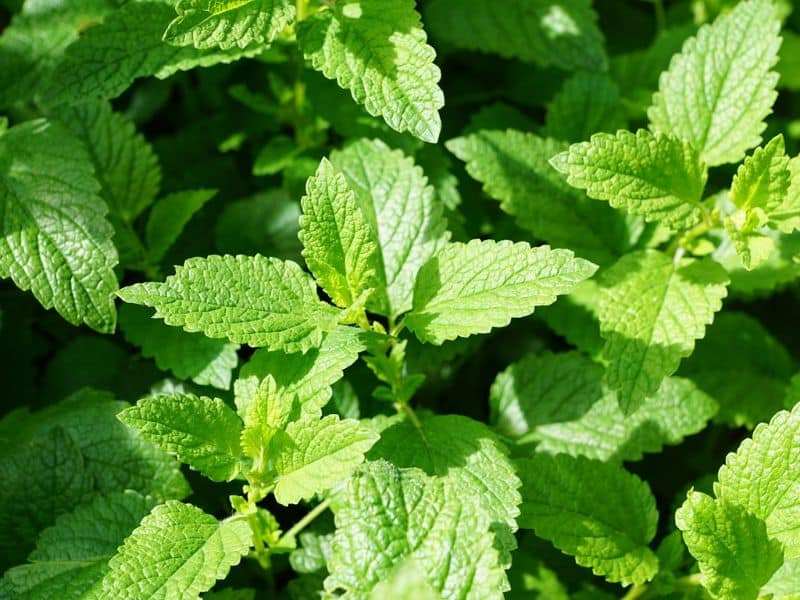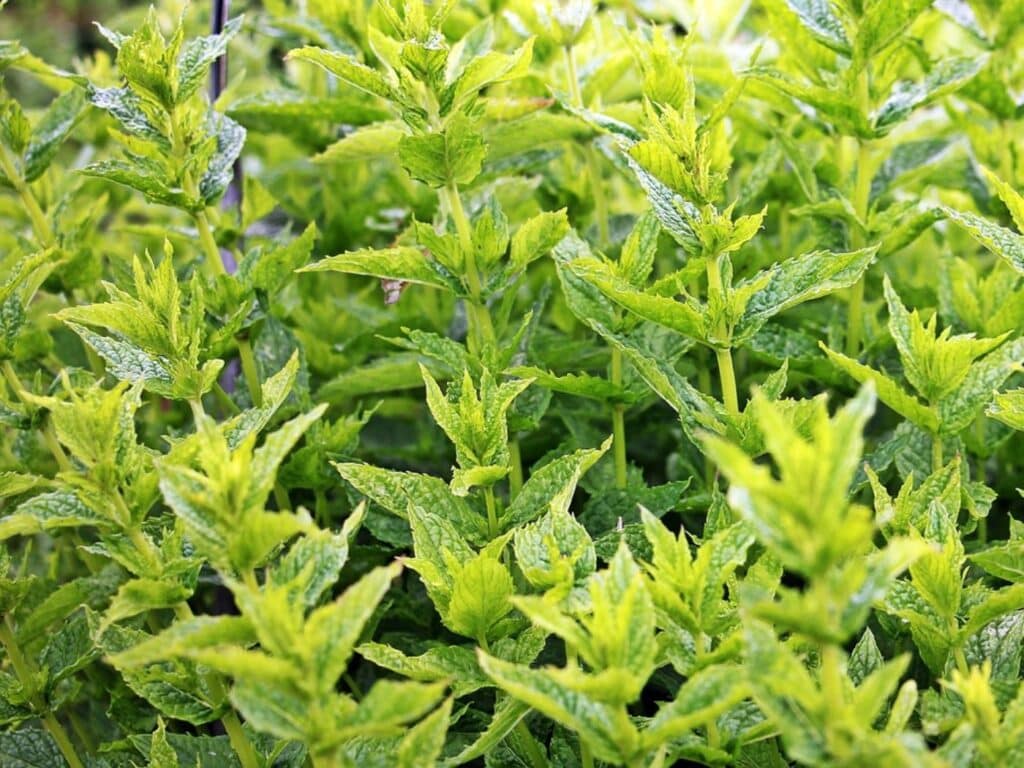Imagine stepping into your garden, expecting to see the vibrant green of your mint plants only to find them fading to a sickly yellow. It’s a sight that can dampen the spirits of even the most seasoned gardeners. But don’t despair just yet. Understanding why your mint leaves are turning yellow is the first step towards restoring their lush green health.
In this article, we’ll delve into the common reasons behind this disheartening phenomenon. We’ll also provide you with practical solutions to tackle this issue head-on. So, whether you’re a green-thumbed veteran or a gardening newbie, you’re in the right place to turn your yellowing mint leaves back to their vibrant best.
Understanding Mint Plant Health
Signs and Symptoms of Unhealthy Mint
Mint plants exhibiting signs of distress often reveal symptoms distinct to their issue. Let’s examine these signs. Discoloration, primarily yellowing of leaves, could be one of the earliest and most prominent signs of an unhealthy mint plant.
Browning around the leaf edges often follows where yellow patches occur, potentially hinting at a complication such as plant disease or nutrient deficiency. Mint plants may also show a drop in new leaf production or general plant growth, with wilted and droopy leaves being a tell-tale symptom that the plant’s health is compromised.
Factors Contributing to Leaf Discoloration
Various factors may well cause mint leaves to turn yellow. At the top of the list is overwatering or underwatering. Mint plants prefer a balance: they need damp, well-drained soil — not soaking wet or completely dry.
Nutrient deficiency, particularly a lack of iron or nitrogen, is another common cause of leaf yellowing. Mint plants require these elements to stay healthy, produce chlorophyll, and maintain their vibrant green color.
Improper growing conditions, such as inadequate lighting or incorrect soil pH, could also be contributing to your mint plant’s leaf discoloration. Light plays a crucial role in plant health, and your mint plant may well not be getting enough. Similarly, mint prefers slightly acidic to neutral soil pH and could react adversely to highly acidic or alkaline soils.
Lastly, pests and disease often pose a significant threat to mint plant health. Microscopic pests such as aphids or spider mites, as well as diseases like leaf spot or powdery mildew, can cause substantial damage to your mint plant, including leaf discoloration.
Recognizing and addressing these contributing factors is the first step towards improving your mint plant’s health and preventing further leaf discoloration.
Common Causes of Yellowing Mint Leaves
Nutrient Deficiencies and Soil Quality
Inspect your plant and soil closely. A lack of essential nutrients often results in mint leaves turning yellow. For example, nitrogen deficiencies typically present as yellowing on older, lower leaves first.
Test your soil’s nutrient content with a soil testing kit, available at most gardening supply stores. If deficiencies are identified, amend your soil with a balanced fertilizer to provide your mint with the nutrients it lacks.
Watering Issues: Over-watering and Under-watering
Let’s discuss the watering of your mint plant. Both over-watering and under-watering can cause yellowing leaves. If the plant is over-watered, leaves turn yellow and may display brown, mushy parts, as root rot sets in.
On the contrary, under-watered leaves appear dry and crispy first, then turn yellow. Monitor your watering routine closely and adjust as needed to provide optimal moisture.
Light Exposure: Too Much or Too Little
Don’t ignore your mint plant’s light needs. Incorrect light exposure – too much or too little – can stress a mint plant, causing its leaves to turn yellow. Mint thrives on bright, indirect sunlight; sitting in direct sunlight can burn the leaves and cause yellowing.
Similarly, extremely low light, such as in a dark room or a deeply shaded part of your garden, can starve the mint of necessary energy, resulting in yellow leaves. Position your mint where it gets plenty of bright, but indirect light.
Temperature Stress and Seasonal Changes
Finally, pay attention to the temperature and season. Mint is a temperate plant and doesn’t tolerate extreme temperatures well. High summer heat or freezing winter conditions can both cause leaf yellowing. You may well also note yellowing during the transition period between seasons, particularly from an active growing season to a period of dormancy. If temperatures in your area are extreme, consider moving your potted mint inside or taking measures to protect outdoor plants.
Disease and Pest-Related Yellowing

The progression of this article takes you from understanding the fundamentals of yellowing mint leaves to identifying the intricate links between disease, pests, and the abnormal coloration in these valuable plants. Not every yellow leaf stems from nutrient deficiencies or watering issues. Diving deeper, let us explore the impacts of fungal infections, bacterial diseases, and pest infestations.
Fungal Infections and Bacterial Diseases
Fungal infections, such as Verticillium wilt and Mint rust, can be responsible parties for the yellowing of your mint leaves. Infected leaves typically exhibit spots, blotches, or rings of a yellow or brown hue, and these infections can manifest due to high humidity or poor air circulation. Similarly, bacterial diseases, including Pseudomonas syringae, may lead to yellow, wilting leaves as well.
Ensuring appropriate air circulation, managing humidity levels, and taking preventative measures, such as using fungicide sprays, can combat these fungal and bacterial threats. Always remember, healthy plants spring from good practices.
Pest Infestations Affecting Mint Plants
Beyond diseases, tiny uninvited guests could be behind your mint leaves turning yellow. Aphids, spider mites, and whiteflies are keen on making your mint plants their home, causing discolored leaves and overall plant stress. Signs to watch for include leaf curling, tissue damage, and a typically sticky residue known as honeydew.
Employing a rigorous regimen of pest control, considering products such as neem oil or insecticidal soaps, can help keep these pests at bay. Regularly scan your plants, be vigilant in your care, and nature will reward you with lush, healthy mint.
Prevention and Treatment Strategies
Preserving the health of your mint plants requires attention to diverse factors. This section elucidates specific preventative and treatment strategies that you can employ.
Soil and Nutrient Management
Improving soil and nutrient management acts as a crucial defense against yellowing leaves in mint plants. Regularly test your soil’s pH and nutrient status. Mint prefers a pH of 6.0 to 7.0, along with a balanced mix of nitrogen, potassium, and phosphorous.
A soil test identifies any deficiency, allowing you to apply the appropriate fertilizer. For example, a lack of nitrogen often results in yellow leaves, resolved by supplementing with a nitrogen-rich fertilizer.
Optimizing Watering Practices
Proper watering practices can prevent the onset of yellow leaves in your mint plants. Over-watering or under-watering initiates stress in the plants, often shown by yellowing leaves. However, mint plants typically favor moist but well-draining soil.
So, it’s vital to monitor your mint’s moisture levels: Too dry or too wet can lead to leaf discoloration. A useful strategy is watering your mint plants early in the day; this allows excess water to evaporate before the cooler evening temperatures.
Maintaining Proper Light and Temperature Conditions
Exposure to appropriate light and temperature also help in maintaining healthy, green mint leaves. Too much direct sunlight can burn the leaves, turning them yellow, while too little can lead to poor growth and yellowing. Ideally, mint needs a mix of bright indirect sunlight and partial shade.
The optimal temperature range lies between 60-70°F during the day. By providing suitable light and temperature conditions, you mitigate the chances of leaf discoloration.
Natural Remedies and Chemical Treatments
Exploring both natural and chemical remedies provide you with various options when it comes down to addressing plant health issues. Natural remedies for mint plants include manual removal of diseased leaves and pests, application of natural insecticides like neem oil, and the use of compost tea as a soil conditioner.
In severe cases, chemical treatments like fungicides and synthetic insecticides play a role. Remember, always apply these treatments as per the manufacturer’s instructions to avoid damaging your mint plants.
Reviving Your Yellowing Mint Plants
Identifying the Cause and Taking Corrective Action
Upon noticing a yellow hue on your mint leaves, it’s essential to identify the underlying cause swiftly. You already learned that nutrient deficiencies, over-watering, improper light exposure, or pesky infestations could be the culprits. Once identified, take prompt corrective measures before it’s too late.
For example, if nutrient deficiency is the cause, add the required nutrients to the soil. Over-watering issues call for reducing water supply, whereas inadequate lighting requires adjusting the plant’s placement for adequate light exposure. Natural or chemical remedies work best to combat pest infestations. Remember, the solution depends heavily on your plant’s condition and the identified problem.
Monitoring Plant Recovery and Ongoing Care
After initiating the corrective action, observe your mint plant closely. Discard any diseased or dead leaves to promote new growth. Keep tracking moisture levels, light exposure, and general plant health. Consistency in care brings back the lush green color of your mint leaves.
To maintain ongoing care, periodic soil testing proves beneficial for confirming the presence of important nutrients. Be consistent with the watering schedule, keep the light exposure optimum, and put proactive pest control steps into action. Remember, consistency is key when caring for your mint plant. After all, your end goal is to have a healthy mint plant with vibrant green leaves.
FAQs
What are the common causes of yellowing mint leaves?
Yellowing mint leaves are most commonly due to nutrient deficiencies, watering issues, incorrect light exposure, and temperature stress.
Can disease and pests cause mint leaves to turn yellow?
Yes, diseases such as fungal infections and bacterial diseases can cause yellowing of mint leaves. Pests may also infest the plant, resulting in yellowing.
How can I prevent mint leaves from turning yellow?
Prevention strategies include soil and nutrient management, optimizing watering practices, maintaining proper light and temperature conditions, and utilizing natural and chemical remedies when necessary.
How can I revive a yellowing mint plant?
Identify the specific issue causing the yellowing, such as nutrient deficiencies, over-watering, improper light exposure, or pest infestations, and take appropriate corrective action. Ongoing care and monitoring of the plant’s recovery are crucial.
What are the ongoing care measures to ensure the health of mint plants?
Discard diseased leaves, maintain proper moisture levels and light exposure, conduct periodic soil testing, and implement proactive pest control measures to ensure the mint plant’s health and vibrant green leaves.
See more:







